Teeth Before & After Braces: See the Difference
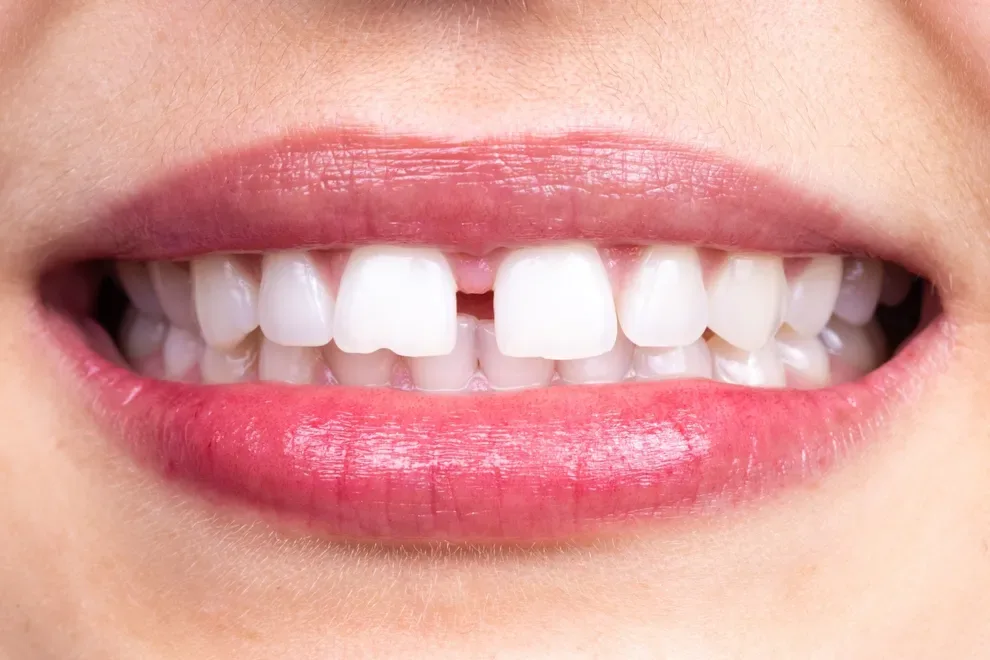
Table of Contents
- Underbite
- Overbite
- Crossbite
- Crowded Teeth
- Gap Teeth
- How Treatment Works
- Why Consider Orthodontic Care?
- Taking Care for Teeth After Braces
- Don't Forget Aligners
Orthodontists use models to explain how your teeth will look after treatment with braces. Some even use computers to show you what your smile will look like from one month to another. But it might take you two years of braces (or longer) to get the smile you always wanted.
We’ll explain how treatment works, how braces can impact common problems, and why you should consider getting help.
How does treatment work?
If your dental professional determines you need orthodontic care, you’ll go through a consultation process to ensure that your team knows just how to move your teeth to the right places.
A consultation for aligners typically follows these steps:
Visual exam: Your doctor looks over all of your teeth and determines how they should move to improve your smile and your health.
Testing: Your doctor uses X-rays and other imaging tools to assess your tooth health below the gumline.
Visualization: Dentists can use modern tools like digital imaging and 3D modeling to visualize how your teeth will look after treatment. You can examine these plans and approve your new smile, too.
With your treatment plan approved, your team will set the date for your braces. Brackets will be glued to your teeth, and they’ll be connected with wires. You may feel discomfort for the first few days, but over-the-counter medications can help to reduce the discomfort.
Why should you consider orthodontic care?
Braces can bring your teeth and jaws into alignment, which could result in a better smile. However, the treatment can do more than just make you look better.
The American Association of Orthodontists explains that orthodontic treatment can provide the following benefits:
Ensure that your teeth and jaws function properly.
Ensure that you can chew and bite properly.
Make clear speech easier.
Prevent tooth decay by ensuring your smile is easier to clean.
Underbite
Your jaws should nest together with the uppers covering the lowers. Your teeth are shaped for this arrangement. People with lower jaws that shoot out in front of their upper teeth have underbites. Dental professionals call this a Class 3 malocclusion or a prognathism.
People with underbites can chip or crack their teeth with each bite they take. And if left untreated, a bite like this can put pressure on the jaws and cause soreness and stiffness.
Treatment can involve widening the upper jaw, pushing the lower jaw back, or both.
Overbite
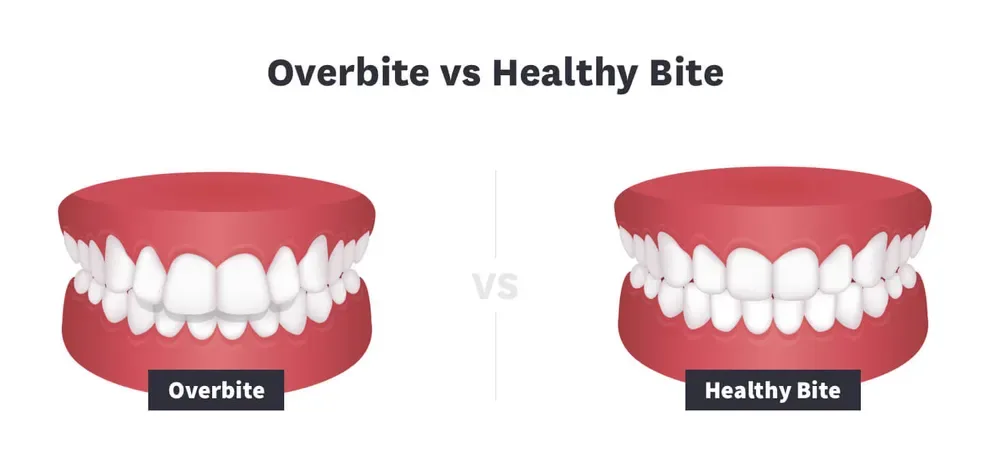
While uppers cover lowers in a healthy mouth, no big gaps should sit between the jaws. If your upper teeth jut out far over the lowers, you have what doctors call a Class 2 malocclusion or retrognathism.
An overbite can make speaking and chewing difficult, as your teeth don't click together properly. You may also find that it's impossible to close your lips over your teeth.
Treatment can involve pushing the upper jaw back, and you may need to widen those upper jaws too.
Crossbite
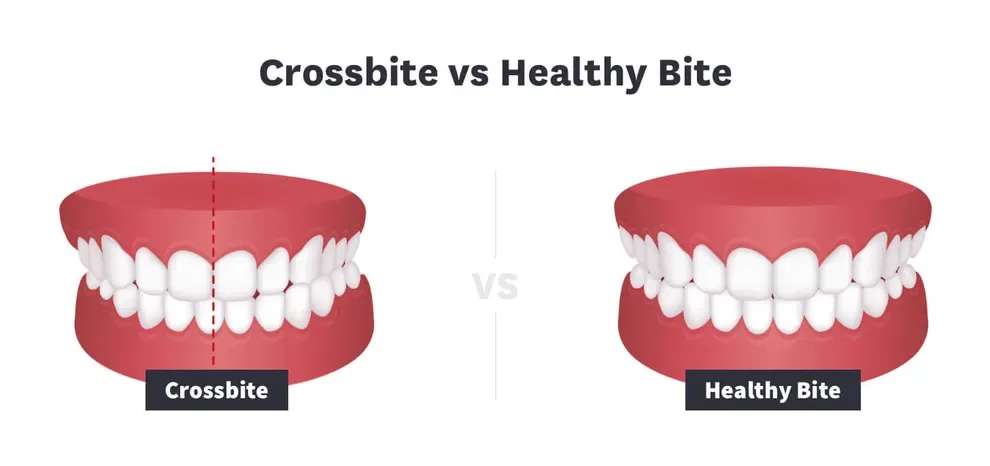
If a few of your upper teeth nest inside your lower teeth, you could have a crossbite. Some people experience this problem in just one or two teeth. Others have the issue in large groups of teeth.
Chips, muscle soreness, and functional problems are all common in crossbites. Crossbites are typically treated by widening the palate, so teeth have space to nest properly. Braces can pull teeth into the proper positions too.
Braces can pull your teeth into alignment, but wearing them is a big commitment, and it's reasonable to want to know what your smile will look like when the work is done.
Crowded Teeth
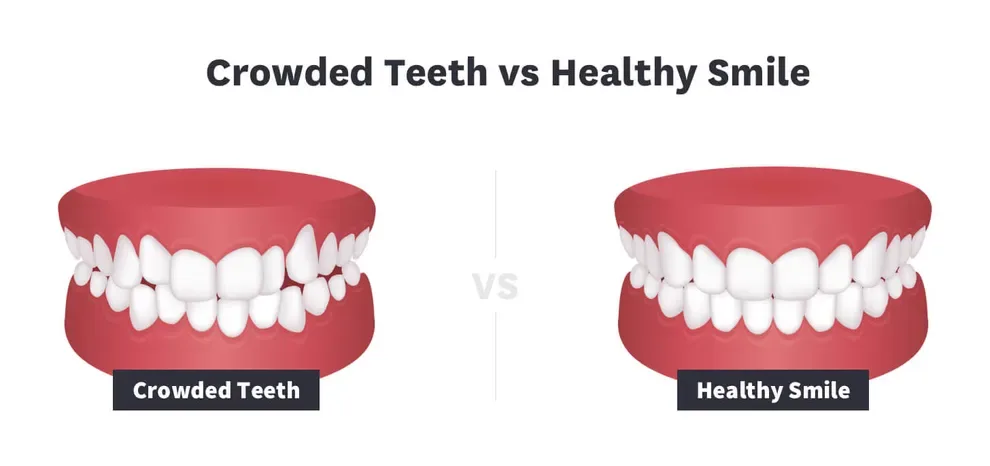
Do all of your teeth fit nicely within your jaw? Or do some twist to the side, jump to the front, or slide to the back? Tooth crowding is caused by teeth that are too large or a jaw that is too small. Some people have both problems.
Sometimes, dentists must remove teeth to make space. But sometimes, dentists can pull and pressure teeth to line up within the jaw, and they can use devices to widen the jaw to create more space.
Leaving crowded teeth alone isn't wise. It's hard to brush and floss in a tightly packed mouth, and poor dental hygiene can lead to tooth loss.
Gap Teeth
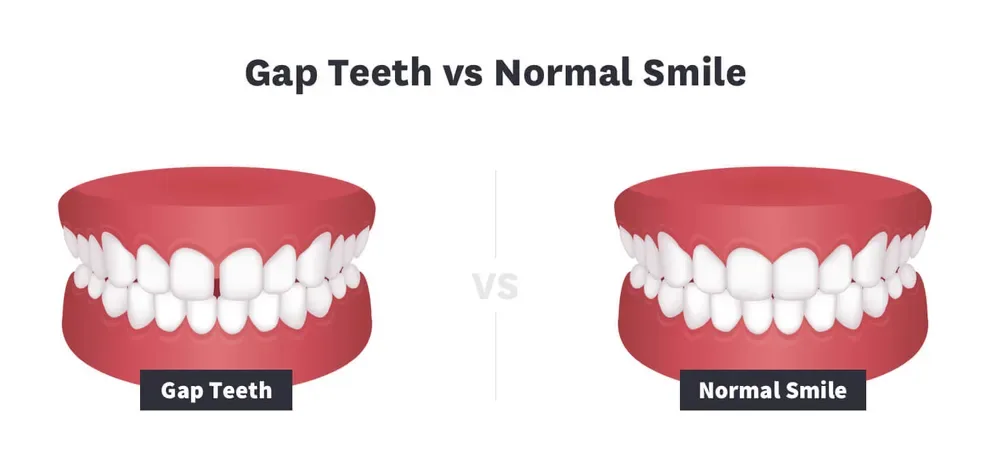
Some people have a space between their front teeth. When they smile, that gap shines through.
A gap makes eating (without spitting) very difficult. And sometimes, people whistle while they talk due to the unusual airflow through their mouths.
At-home treatments involve rubber bands and string. While bloggers love these DIY techniques, dentists say they are dangerous. Braces can tug the teeth together while straightening the other teeth in the mouth.
How to care for teeth after braces
When your treatment plan is complete, you must take special care of your teeth to preserve your smile.
The following steps are required:
Cleaning: Brush your teeth and floss them every day using a soft-bristled brush and a fluoride-based toothpaste. If you’re not sure what products to use, ask your dentist for advice.
Checkups: Visit your dentist regularly for professional examinations and cleanings. Ask your dentist how often you should go to these appointments.
Retainers: Your orthodontist will provide a retainer that keeps your teeth in place after treatment. In most cases, you’ll wear it every night after your braces come off. But your orthodontist may have other instructions you should follow.
Protect: Don’t use your teeth to do things like open packages, always use a mouthguard for contact sports, and don’t chew on things like pens or pencils.
Don't forget aligners
We've shown you plenty of photos of teeth amended with braces. Don't forget that clear aligners can help people with mild to moderate orthodontic issues.
Modern aligners can be created with 3D images of your future smile, and that same technology can help professionals print up the perfect trays to fit your teeth.
In surveys conducted by CostHelper, people without insurance reported paying an average of $4,937 for traditional braces. At-home, doctor-directed aligners from companies like Byte are much less expensive.
In 2022, researchers conducted a detailed review of research comparing aligners and braces. They examined more than 360 studies and combed through all of the data. They found the following:
Aligners were effective for mild to moderate dental issues.
Braces worked better for difficult cases.
Some people had shorter treatment times with aligners than they did with braces.
Oral health was better in people who wore aligners.
Aligners were more comfortable than braces.
Studies like this can help you understand how aligners work in most people, but know that your results can vary. Your doctor can help you determine if aligners are right for you.
